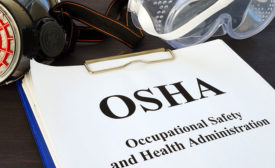Home » Keywords: » injury and illness recordkeeping
Items Tagged with 'injury and illness recordkeeping'
ARTICLES
Reporting variables makes comparisons difficult
How relevant are injury rates?
November 2, 2019
2019 top standards- Critical OSHA standards
OSHA injury - illness recordkeeping standard
OSHA Injury / Illness Recordkeeping and Reporting 29 CFR 1904
January 7, 2019
Tesla denies accusations of hiding injuries
In industry, the motivations are many to under-report
December 12, 2018
Extended Online Edition
OSHA recordkeeping often has little to do with reality
A better way of keeping score
September 6, 2018
Going public with your injury rates
Pros debate whether transparency helps or harms reputations
August 1, 2018
A Confined Space blog post
OSHA to employers who violate the recordkeeping rule: No problem!
March 12, 2018
Become a Leader in Safety Culture
Build your knowledge with ISHN, covering key safety, health and industrial hygiene news, products, and trends.
JOIN TODAYCopyright ©2025. All Rights Reserved BNP Media.
Design, CMS, Hosting & Web Development :: ePublishing









